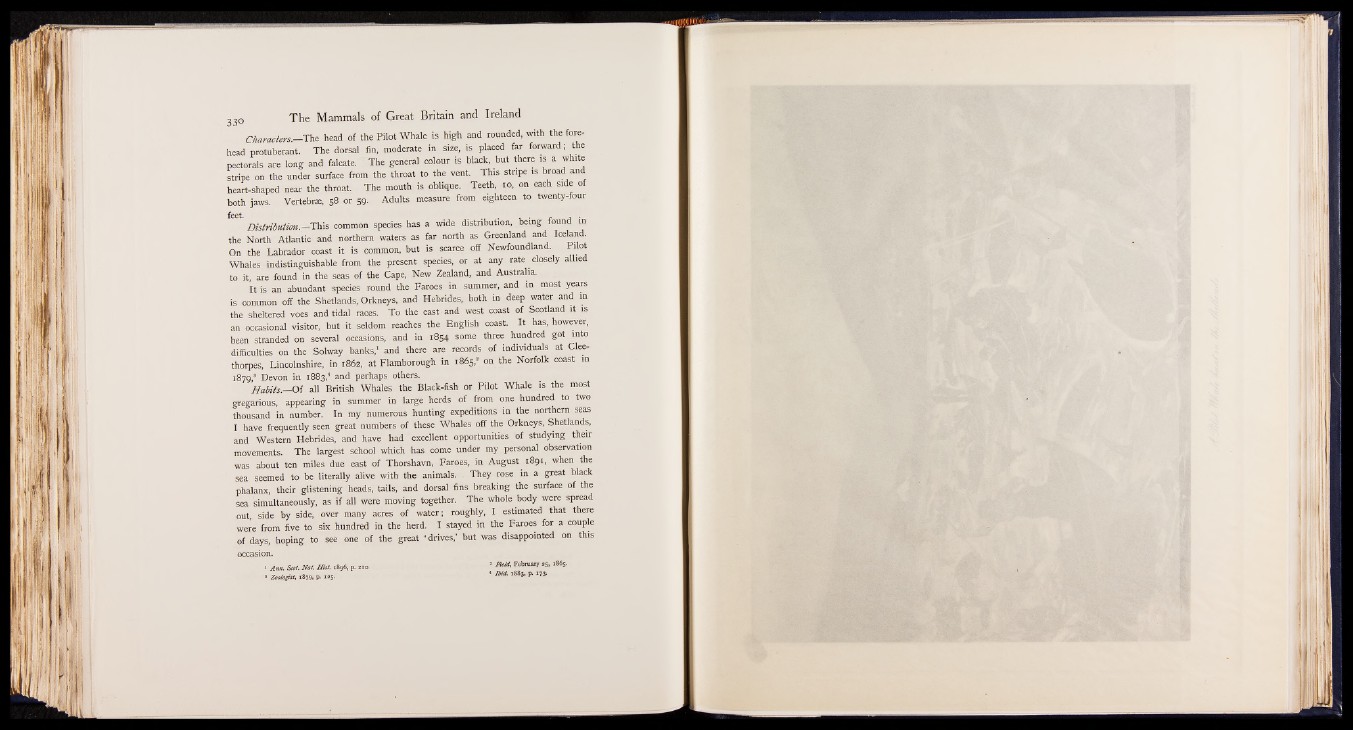
Characters.— The head of the Pilot Whale is high and rounded, with the forehead
protuberant. The dorsal fin, moderate in size, is placed far forward; the
pectorals are long and falcate. The general colour j | black, but there ■ a white
stripe on the under surface from the throat to the vent. This stripe is broad and
heart-shaped near the throat. The mouth is oblique. Teeth, 10, on each side of
both jaws. Vertebrae, 58 or 59. Adults measure from eighteen to twenty-four
Distribution.—This common species has a wide distribution, being found in
the North Atlantic and northern waters as far north as Greenland and Iceland.
On the Labrador coast it is common, but is scarce off Newfoundland. Pilot
Whales indistinguishable from the present species, or at any rate closely allied
to it, are found in the seas of the Cape, New Zealand, and Australia.
It is an abundant species round the Faroes in summer, and . in most years
is common off the Shetlands, Orkneys, and Hebrides, both in deep water and in
the sheltered voes and tidal races. To the east and west coast of Scotland it is
an occasional visitor, but it seldom reaches the English coast. It has, however,
been stranded on several occasions, and in 1854 .some three hundred got into
difficulties on the Solway banks,1 and there are records of individuals at Clee-
thorpes, Lincolnshire, in 1862, at Flamborough in 1865,2 on the Norfolk coast m
1879,8 Devon in 1883,4 and perhaps others.
H aH ts— Of all British Whales the Black-fish or Pilot Whale | | th e most
gregarious, appearing in summer in large herds of from one hundred to two
thousand in number. In my numerous hunting expeditions in the northern seas
I have frequently seen great numbers of these Whales off the Orkneys, Shetlands,
and Western Hebrides, and have had excellent opportunities of studying their
movements. The largest school which has come under my personal observation
was about ten miles due east of Thorshavn, Faroes, in August 1891, when the
sea seemed to be literally alive with the animals. They rose in a great black
phalanx, their glistening heads, tails, and dorsal fins breaking the surface of the
sea simultaneously, as if all were moving together. The whole body were spread
out, side by side, over many acres of water; roughly, I estimated that there
were from five to six hundred in the herd. I stayed in the Faroes for a couple
of days, hoping to see one of the great ‘ drives,’ but was disappointed on this
occasion.
1 Ann. Scot. Nat. H ist. 1896, p.
* Zoologist, 1879, p. 125.
s Field, February 25, 1865.
* Ibid. 1883, p. 173.